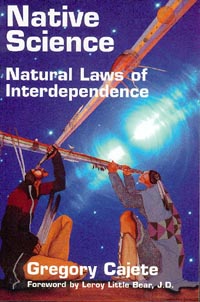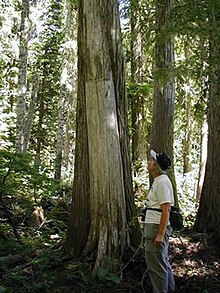
Ecology is the natural science of the relationships among living organisms, including humans, and their physical environment. Ecology considers organisms at the individual, population, community, ecosystem, and biosphere level. Ecology overlaps with the closely related sciences of biogeography, evolutionary biology, genetics, ethology, and natural history.

An invasive species is an introduced species to an environment that becomes overpopulated and harms its new environment. Invasive species adversely affect habitats and bioregions, causing ecological, environmental, and/or economic damage. The term can also be used for native species that become harmful to their native environment after human alterations to its food web. Since the 20th century, invasive species have become a serious economic, social, and environmental threat worldwide.

Urban ecology is the scientific study of the relation of living organisms with each other and their surroundings in an urban environment. An urban environment refers to environments dominated by high-density residential and commercial buildings, paved surfaces, and other urban-related factors that create a unique landscape. The goal of urban ecology is to achieve a balance between human culture and the natural environment.
Adaptive management, also known as adaptive resource management or adaptive environmental assessment and management, is a structured, iterative process of robust decision making in the face of uncertainty, with an aim to reducing uncertainty over time via system monitoring. In this way, decision making simultaneously meets one or more resource management objectives and, either passively or actively, accrues information needed to improve future management. Adaptive management is a tool which should be used not only to change a system, but also to learn about the system. Because adaptive management is based on a learning process, it improves long-run management outcomes. The challenge in using the adaptive management approach lies in finding the correct balance between gaining knowledge to improve management in the future and achieving the best short-term outcome based on current knowledge. This approach has more recently been employed in implementing international development programs.

Environmental resource management or environmental management is the management of the interaction and impact of human societies on the environment. It is not, as the phrase might suggest, the management of the environment itself. Environmental resources management aims to ensure that ecosystem services are protected and maintained for future human generations, and also maintain ecosystem integrity through considering ethical, economic, and scientific (ecological) variables. Environmental resource management tries to identify factors affecteconflicts thatd bconflicts thaty conflictthattheorists thaariset arise between meeting needs and protecting resources. It is thus linked to environmental protection, resource management, sustainability, integrated landscape management, natural resource management, fisheries management, forest management, wildlife management, environmental management systems, and others.

Ecological restoration is the process of assisting the recovery of an ecosystem that has been degraded, damaged, or destroyed. It is distinct from conservation in that it attempts to retroactively repair already damaged ecosystems rather than take preventative measures. Ecological restoration can reverse biodiversity loss, combat climate change, and support local economies. The United Nations named 2021-2030 the Decade on Ecosystem Restoration.
Ethnoecology is the scientific study of how different groups of people living in different locations understand the ecosystems around them, and their relationships with surrounding environments.

Urban prairie is a term to describe vacant urban land that has reverted to green space. The definition of an urban prairie, also known as an urban grassland, can vary across countries and disciplines, but at its broadest encompasses meadows, lawns, and gardens, as well as public and private parks, vacant land, remnants of rural landscapes, and areas along transportation corridors.If previously developed, structures occupying the urban lots have been demolished, leaving patchy areas of green space that are usually untended and unmanaged, forming an involuntary park. Spaces can also be intentionally created to facilitate amenities, such as green belts, community gardens and wildlife reserve habitats.Urban brownfields are contaminated grasslands that also fall under the urban grassland umbrella. Urban greenspaces are a larger category that include urban grasslands in addition to other spaces.
Prior to the European colonization of the Americas, indigenous peoples used fire to modify the landscape. This influence over the fire regime was part of the environmental cycles and maintenance of wildlife habitats that sustained the cultures and economies of the Indigenous peoples of the Americas. What was initially perceived by colonists as "untouched, pristine" wilderness in North America was the cumulative result of the Indigenous use of fire, creating an mosaic of grasslands and forests across North America, sustained and managed by the peoples indigenous to the landscape.
Traditional ecological knowledge (TEK) describes indigenous and other traditional knowledge of local resources. As a field of study in Northern American anthropology, TEK refers to "a cumulative body of knowledge, belief, and practice, evolving by accumulation of TEK and handed down through generations through traditional songs, stories and beliefs. It is concerned with the relationship of living beings with their traditional groups and with their environment." Indigenous knowledge is not a universal concept among various societies, but is referred to a system of knowledge traditions or practices that are heavily dependent on "place". Such knowledge is used in natural resource management as a substitute for baseline environmental data in cases where there is little recorded scientific data, or may complement Western scientific methods of ecological management.
A social-ecological system consists of 'a bio-geo-physical' unit and its associated social actors and institutions. Social-ecological systems are complex and adaptive and delimited by spatial or functional boundaries surrounding particular ecosystems and their context problems.

Climate Change and Indigenous Peoples describes how climate change disproportionately impacts Indigenous peoples around the world when compared to non-Indigenous peoples. These impacts are particularly felt in relation to health, environments, and communities. Some Indigenous scholars of climate change argue that these disproportionately felt impacts are linked to ongoing forms of colonialism. Indigenous peoples found throughout the world have strategies and traditional knowledge to adapt to climate change. These knowledge systems can be beneficial for their own community's adaptation to climate change as expressions of self-determination as well as to non-Indigenous communities.
Jan Salick is an American botanist who researches the interaction between humans and plants (ethnobotany) and conservation biology. Her specialisms include alpine environments, climate change, indigenous peoples and traditional knowledge. She is a past-president of the Society for Economic Botany and holds their Distinguished Economic Botanist award. She is also Fellow of the American Association for the Advancement of Science and received the Fairchild Medal for Plant Exploration. In 2019 she retired as Senior Curator of Ethnobotany at the Missouri Botanical Garden, and now has emerita status.
Jacqueline Rae Beggs is a New Zealand entomologist and ecologist specialising in biodiversity and biosecurity.
Orville Huntington is an American researcher and educator of Native Alaskan Athabaskans descent.
Collaborative environmental governance is an approach to environmental governance which seeks to account for scale mismatch which may occur within social-ecological systems. It recognizes that interconnected human and biological systems exist on multiple geographic and temporal scales and thus CEG seeks to build collaboration among actors across multiple scales and jurisdictions.

Samuel M. 'Ohukani'ōhi'a Gon III is an American scientist and cultural advisor for The Nature Conservancy of Hawaiʻi. He was born and raised in Nuʻuanu on the island of Oahu. Gon studied Hawaiian culture under Kumu John Keolamala'āinana Lake. Gon worked to integrate Hawaiian culture, values, and knowledge into conservation efforts. Gon sat on the Office of Hawaiian Affairs panel, the Hawaii Land Board (2006-2014).

Native Science: Natural Laws of Interdependence is a 2001 book about traditional ecological knowledge by Gregory Cajete.










